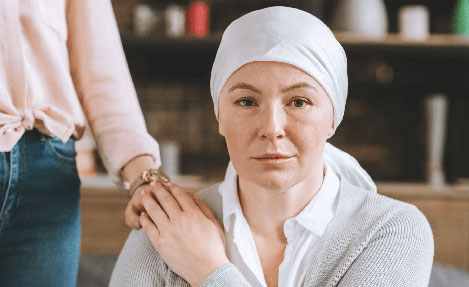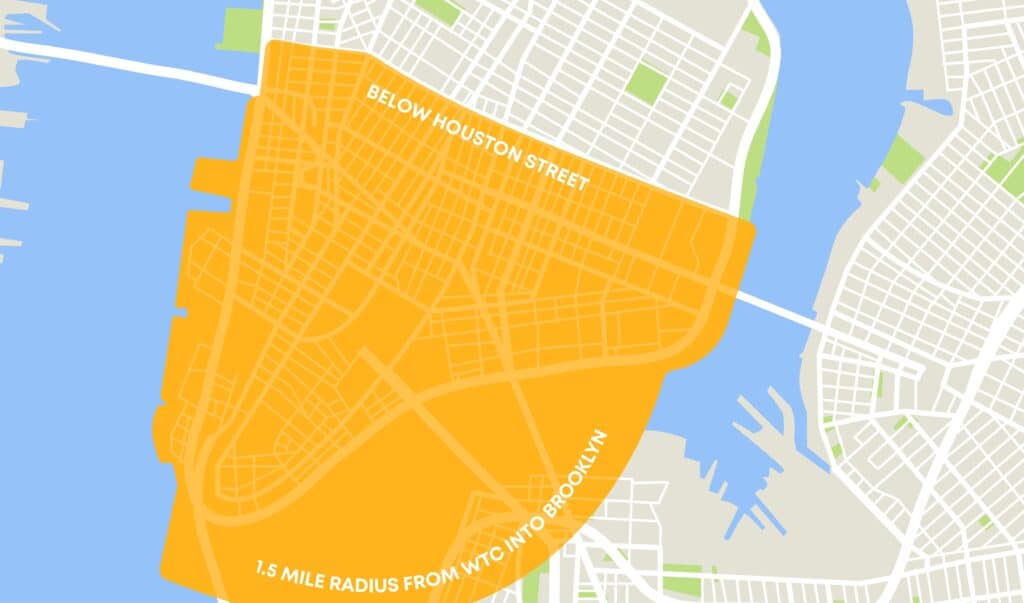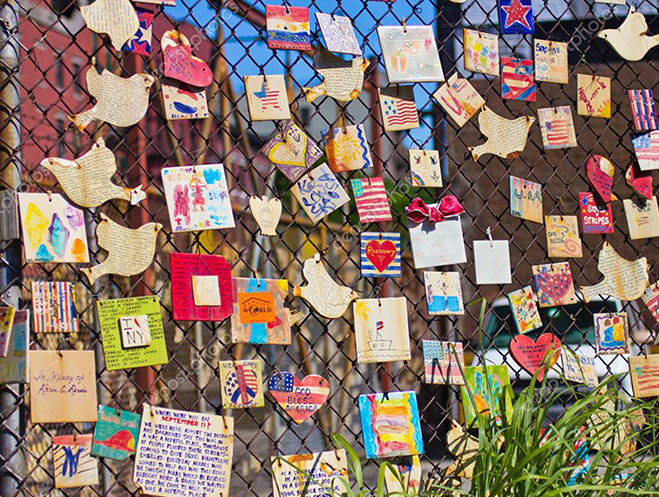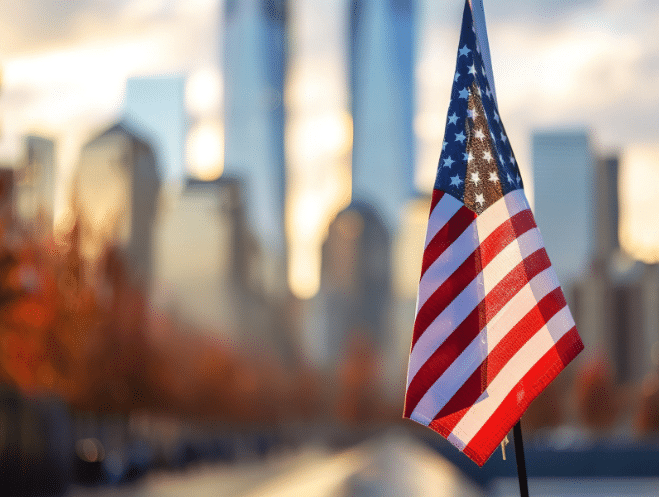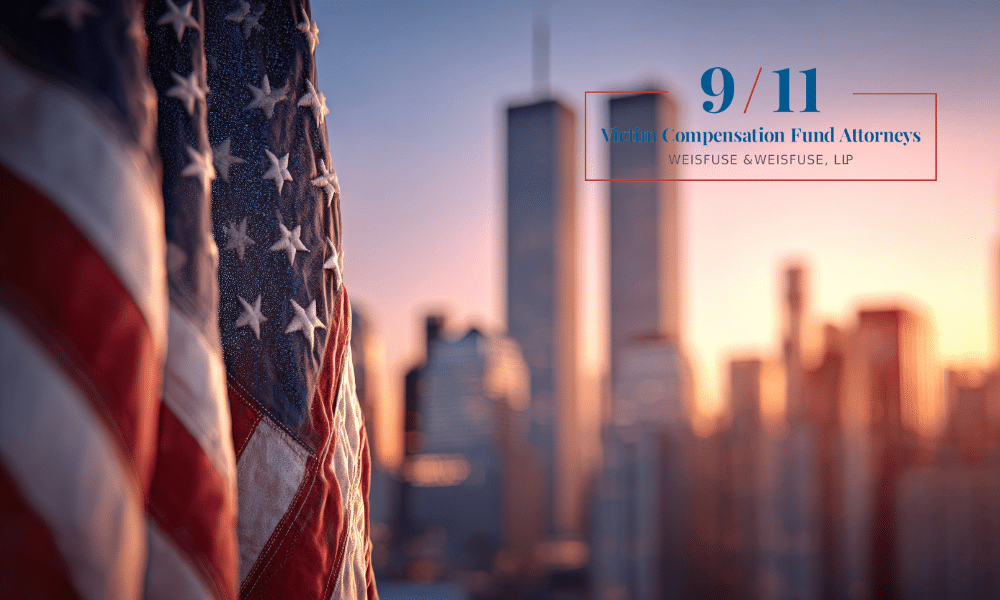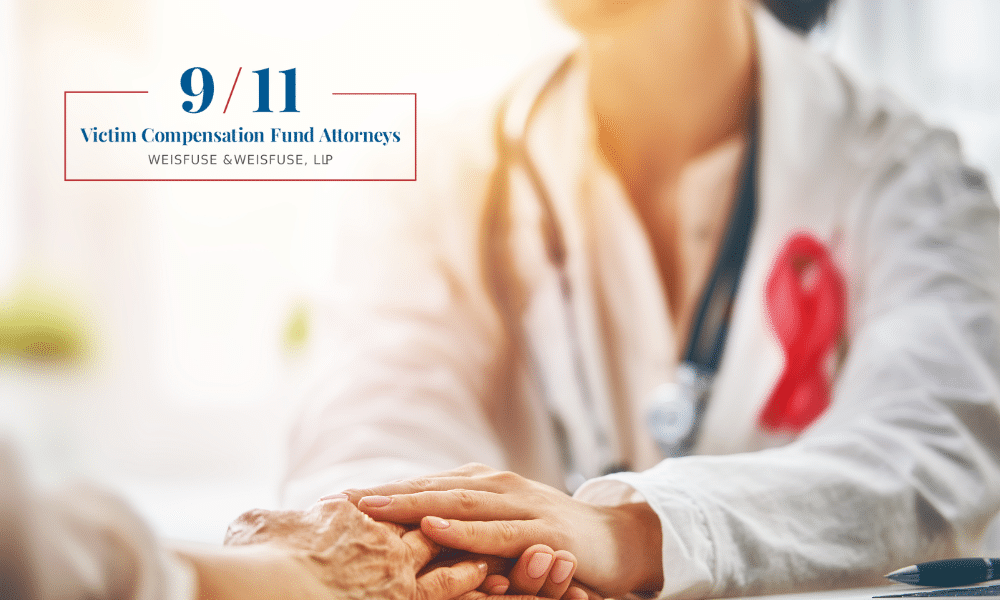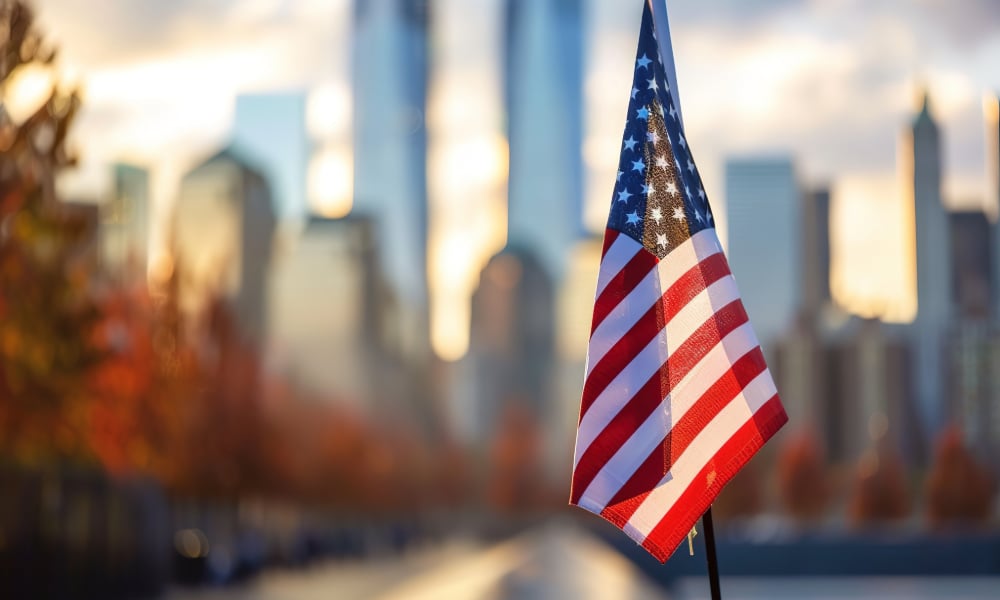
Common Long-Term Health Conditions Linked to 9/11 Exposure
Almost 25 years after the 9/11 attacks, the health effects associated with the toxic dust cloud that hung over Lower Manhattan for months afterward continues to claim victims and make people sick.
The health effects of exposure to the cloud range from minor conditions to the most serious and life-threatening cancers.
In this article, we look closely at the wide range of health effects resulting from 9/11, the programs available to victims, and how the air at Ground Zero was declared “safe” prematurely by the government in the days after the attacks.
9/11 Exposure zone and health conditions
When the Twin Towers and Building 7 collapsed after the 9/11 attacks, a tremendous amount of debris fell a great distance to the ground, mingling with jet fuel and other substances to create a toxic cocktail that hung in the air for months.
Pulverized concrete and other construction debris contained more than 2,500 contaminants, including the highly toxic carcinogen asbestos, lead, and mercury, to name just a few of the better-known ones. Fires burned for three months, releasing more toxins into the air.
Despite the known presence of such toxins, first responders braved the danger to help with the rescue, search, and recovery effort. Residents, students, and workers were encouraged to return to Lower Manhattan and resume their normal lives within days of the attacks.
Debilitating respiratory illnesses and other conditions soon started to be detected among rescue, recovery, and cleanup workers. Considerable attention was soon directed at the health impacts of 9/11 for survivors and responders.
Increased cancer risk
One of the most serious health effects arising from the September 11 attacks is an increased risk of cancer.
The incidences for prostate cancer, thyroid cancer, lung cancer, leukemia, myeloma, and skin cancer, in particular, were significantly elevated among the rescue and/or recovery workers. Around 70 cancers have since been linked to exposure to the toxic dust cloud in the wake of 9/11.
The World Trade Center Health Program (WTCHP) was established to provide free medical care and monitoring for those affected with cancer and other diseases. According to the Centers for Disease Control and Prevention, around 18.5 percent of responders and 31.4 percent of survivors enrolled in the program have been diagnosed with cancer.
Aero-digestive disorders
Multiple types of aero-digestive disorders have also been linked with exposure to the toxic dust cloud. For instance, a Pennsylvania State University/Monmouth University study of police officers at the Ground Zero site reported that respiratory illnesses grew by more than two hundred percent in the year and a half after the September 11 attacks.
Some of the aero-digestive disorders linked with 9/11 include:
- Chronic rhinosinusitis: 35 percent of responders and 20.9 percent of survivors.
- Gastroesophageal reflux disease (GERD): 32 percent of responders and 17.5 percent of survivors.
- Asthma: 17.2 percent of responders and 16.8 percent of survivors.
- Sleep apnea: 18.7 percent of responders and 4.8 percent of survivors.
- Chronic respiratory order: 9.8 percent of responders and 4.1 percent of survivors.
- Chronic obstructive pulmonary disease (COPD): 4.2 percent of responders and 2.9 percent of survivors.
Mental health conditions
Another major health effect arising from the September 11 attacks is post-traumatic stress disorder (PTSD) and other mental health conditions. Many responders and survivors experienced substantial symptoms of stress after the attacks, with some doctors quick to recognize the chronic health impact of the disaster.
PTSD has affected 11.4 percent of responders and 12.5 percent of survivors enrolled in the WTC Health Program, while anxiety disorder and depressive disorder have affected many others.
WTC Health Program and VCF
The WTCHP was established to provide free medical monitoring and care for the 400,000 responders and survivors affected by the attacks.
The September 11th Victim Compensation Fund (VCF) initially provided financial compensation for individuals diagnosed with cancer due to exposure to the toxic dust cloud between September 11, 2001, and May 30, 2002. The scope of the fund was later extended to provide coverage for any illness or death incurred by responders or survivors.
Under this program, any individual diagnosed with a 9/11 related condition (generally by registering with the WTC Health Program) is eligible for compensation from the fund. Some individuals face challenges when registering for the WTCHP or applying for compensation and choose to hire a dedicated 9/11 lawyer, who assists with filing claims, submitting evidence, and proving their presence in the exposure zone between the eligible dates.
Alleged government downplaying of the post-9/11 health risks
While the precise composition of the smoke and dust in the air at Ground Zero was not fully understood immediately after the attacks, the conditions were well-known to be potentially dangerous to human health.
Some critics say that safety protocols were not followed, and that many of the health effects arising from the September 11 attacks could have been avoided or mitigated if the risks hadn’t been downplayed by the government.
Some doctors approached the Centers for Disease Control and Prevention to advise against the speedy return to buildings in the area because of possible hazards from various toxic materials.
The EPA was still gathering data about the composition of the air when Wall Street reopened a few days after the attacks and, despite the known risks to responders, the federal requirement for workers to wear respirators was not enforced by Mayor Giuliani in New York.
Instead, the air was declared safe at Ground Zero and workers, residents, and students returned, leading to a cocktail of adverse health conditions in the two decades and more since the attacks.
More people have now died from 9/11 illnesses than during the attacks
Many more people have now died from 9/11-related conditions than those killed on September 11 in the attacks.
There were 2,996 victims killed on 9/11, while almost 7,000 people enrolled in the WTC Health Program have died. This figure is from all causes, not only World Trade Center-related conditions but the 130,000 survivors and responders who have enrolled in the program are testament to the severe health effects of 9/11 dust exposure.
The VCF has reported a “fairly significant increase” in claims filed by survivors in recent years, 48 percent of whom have cancer. To date, the fund has issued over $9 billion in compensation to 9/11 victims and their families.
To discuss your situation and learn more about how we may be able to help you, please call Weisfuse & Weisfuse, LLP at 212-983-3000 or contact us online to schedule a free consultation.
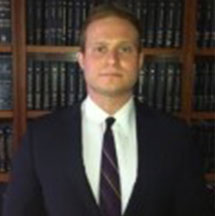
About Jason Weisfuse –
9/11 Victim Compensation Fund Attorney
About Jason Weisfuse –
9/11 Victim Compensation Fund Attorney
Jason E. Weisfuse is a seasoned 9/11 cancer attorney and managing partner at Weisfuse & Weisfuse, LLP, a New York City-based law firm dedicated to representing individuals affected by the September 11th attacks. Since the establishment of the September 11th Victim Compensation Fund (VCF), Jason has been instrumental in assisting first responders, survivors, and families in securing the compensation and medical benefits they deserve.
With a Juris Doctor from New York Law School (2009), Jason brings extensive experience regarding the 9/11 Victim Compensation Fund to his practice. His deep understanding of the VCF and the World Trade Center Health Program (WTCHP) has enabled him to navigate complex claims processes effectively, resulting in substantial awards for his clients.
Jason’s commitment to the victims in the 9/11 community is evident through his active involvement in professional organizations such as the New York State Trial Lawyers Association and the American Association for Justice. He has also contributed to legal discourse with publications in the New York Law Journal, reflecting his dedication to legal excellence and advocacy.
At Weisfuse & Weisfuse, LLP, Jason continues to provide compassionate and knowledgeable representation, ensuring that those affected by 9/11 receive the support and compensation they are entitled to.
